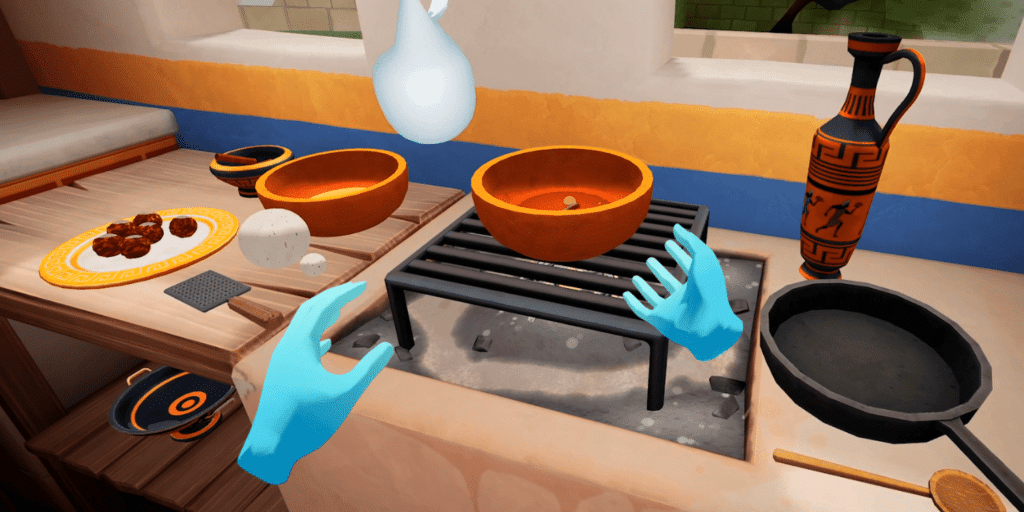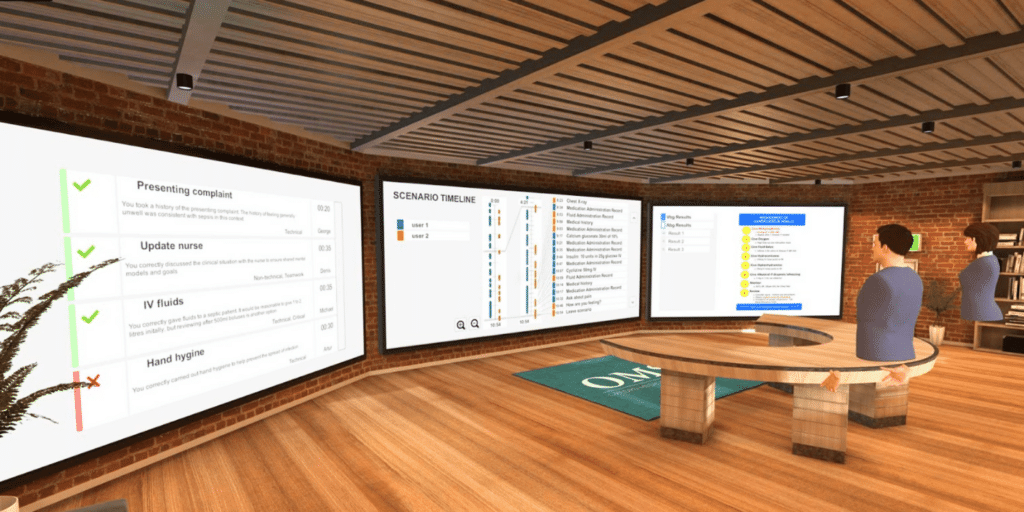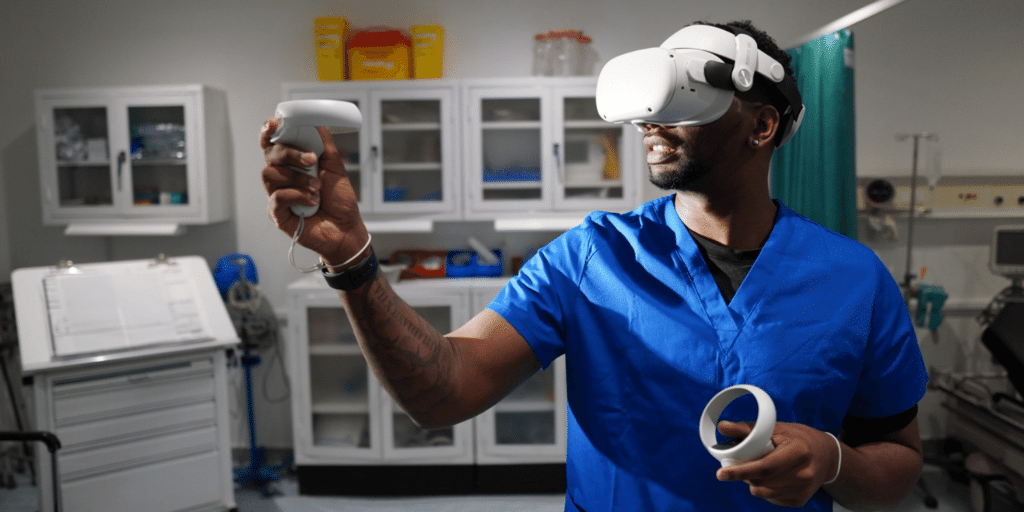While the development of virtual reality technology stretches back as far as the early 19th century, it is only in recent years that VR has started to become more widely available to the public. Since its commercial debut in mid-2010, virtual reality has been making a steady impact. Hardware is becoming much more affordable, and we’re no longer limited by wires or access to a high-end gaming PC.
What is VR?
How is VR giving us a glimpse into the future?
Virtual reality hardware is becoming more affordable, and we’re no longer limited by wires or access to a high-end PC. As accessibility to VR technology has improved, companies are turning their attention to the metaverse. Valued at $9.2 billion in 2020, the global VR market is set to grow a staggering 868 per cent by 2027 to $89.1 billion. Enthusiasm for virtual reality is spreading. In fact, the applications of this innovative technology are virtually(!) endless. Without further ado, here are five ways VR is already unveiling a new world of possibilities.
1. Cutting edge training
Of course we had to mention this one first! Virtual reality is undoubtedly becoming a popular medium for delivering educational content. As hardware becomes increasingly cost-effective, more educators are using VR to reimagine the learning experience in ways never before possible.
Due to its immersiveness and scalability, it’s no surprise to learn that healthcare is one of the critical industries benefiting most from virtual reality. It enables users to pick up a headset and easily practice complex clinical situations with no risk to patients. Plus, with a growing choice of headsets available, institutions can freely embed virtual reality into the curriculum without the need for any creative workarounds.
Finally, the versatility of VR technology means companies can create software to achieve specific learning objectives. For instance, while some companies focus on procedural training for surgeons, OMS trains healthcare professionals in critical thinking, clinical decision-making, and patient interaction. VR also opens up the potential to better understand the struggles of disabled patients (such as those with a hearing impairment), which builds empathy and fosters better patient care.
The educational and training applications of virtual reality are spreading far beyond clinical practice. Hospitality brands such as the Hilton have seen the immense benefits of using VR to provide empathy training for staff, with the same level of training delivered in a fraction of the time.
Engaging education

Getting hands-on
VR hardware doesn’t currently allow us to perceive touch in quite the same way we do in reality. That’s soon likely to change. Advancements in haptics will open up the possibility for us to feel the weight of an artifact in our hands, experience the resistance of piano keys when learning to play, or even feel some gentle pressure when inserting a virtual patient’s IV line.
Natural Language Processing (NLP) is a rapidly developing field of machine learning technology that will enable users to have authentic, rich conversations with simulated characters in virtual reality. It’s an exciting thought for developing patient consultation skills in healthcare. Both vibro-haptic hand control and NLP voice control are new features being trialed by OMS in 2022. Not only will this bring unprecedented realism to the way learners experience VR simulation, but these features will also help train clinicians in holistic patient care.
2. Global communication
Between social media, instant messaging, and video calling, innovations in technology have made the world smaller than ever before. Virtual reality goes a step further, making us believe we’re in the same space as friends, family, or colleagues.
The concept of presence — the feeling of being physically present in an environment — is what sets VR apart from other technologies. Social VR encourages users to enjoy activities in the same digital space, which brings us closer in a more realistic way. Many social platforms, like VRChat, empower users to meet others across the globe in a virtual space, giving them a new and exciting way to feel part of a community.
In December 2021, Meta (formerly known as Facebook) announced that, for the first time, Horizon Worlds can be enjoyed by everyone in the US and Canada without an invitation. Billed as “the most collaborative platform in VR”, Meta’s Horizon Worlds gives users the tools to build, explore, and play with friends without a second thought to distance.
Distance training for healthcare
Smarter patient consultations

3. Improved therapeutics
A pain-free realilty
The opioid epidemic sweeping the US has added greater urgency to the search for non-addictive pain remedies. Virtual reality may be the answer we’ve been searching for.
VR technology has the potential to reduce pain in a variety of situations, such as during complicated cases of childbirth. Clinical trials at Monash University in Melbourne, Australia, show VR can significantly reduce pain for mothers during external cephalic version procedures (where breech babies are turned manually). VR can offer patients respite and, in some cases, the hope of recovery where previous therapies and technologies have failed.
Managing mental-health
4. Next generation entertainment
VR has unquestionably made its mark on the gaming industry. Take Beat Saber — in early 2021, the developers announced a staggering 4 million sales (and counting!) since its launch in 2018. But the potential of virtual reality goes far beyond gaming, and it could redefine the way we understand entertainment.
In 2020, virtual reality stepped up to fill the gap left by an absence of live physical events, and platforms continue to host completely virtual events today. The Oculus Venues app hosts a roster of concerts, comedy clubs, and sports fixtures, whereas ansar, which is known for its virtual dance parties and raves, delivers the party experience from the comfort of your home.
Interactive exhibitions
When venues began to open again, VR expanded the reach of events by offering a virtual alternative to in-person attendance. As part of their 2021 Alice: Curiouser and Curiouser exhibition, the V&A Alice in Wonderland story. Users could choose to experience Alice’s world at the in-person exhibit, or download it at home to enjoy from afar.
In January 2022, popular artist KAWS pioneered a virtual recreation of his real-life ‘NEW FICTION’ exhibition so that it could be enjoyed around the world. The exhibition was hosted in Fortnite — which can be played on many mainstream VR headsets — and has been hailed as “the beginning of a new chapter of art”.

5. Immersive shopping
COVID-19 saw a rapid increase in the adoption of virtual reality technology for shopping and housebuying. Now, with consumers becoming more comfortable with VR technology, we can look forward to new and exciting ways to shop.
But why is this? Because virtual reality effortlessly combines the experience of a physical shop with the ease and convenience of a digital one. As a result, brands are opening stores in the metaverse for customers to enjoy without ever leaving the house.
Real brands, virtual showrooms
Obsess is a platform that delivers 360-degree showroom environments for brands. They meticulously recreate the stores of famous retailers, paying attention to every detail, including the music that plays inside. Anyone, anywhere in the world, can shop there.
Some companies are thinking even bigger. For example, Japanese cosmetics brand SK-II recently launched a virtual city to promote and sell their products, rewarding users with in-game currency for their participation.
So there we have it…
Over 64 million people are already using virtual reality worldwide, and that’s just the beginning. Enormous strides in virtual reality technology are set to transform how we shop, learn, and socialize sooner than we think.
Some industries are already embracing the change. In healthcare alone, numerous applications of virtual reality are revolutionizing patient healthcare and pioneering the way clinicians train. When it comes to delivering scalable, immersive clinical training, the virtual reality revolution is here — and there is so much more to come!
Patients who have experienced the agree that healthcare providers should “use the technology for your patients’ today, not their tomorrows”. And health systems needn’t wait; VR simulation is already and patient outcomes with no compromise on quality. The future of VR is already here, and you can lead the change in your industry today.
